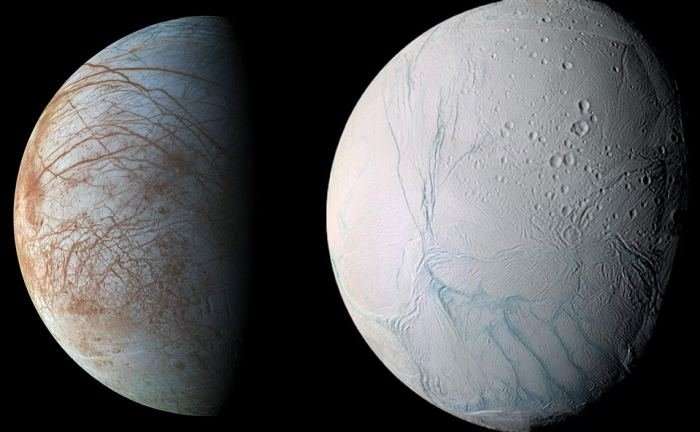The Revelation of Europa and Enceladus
For centuries, Earth stood alone as an ocean oasis in the vast cosmic desert. However, the revelation came in 1979 when NASA’s Voyager spacecraft passed by Jupiter, revealing the enigmatic moon Europa. Subsequent encounters in 1996 with NASA’s Galileo spacecraft unveiled a strange magnetic field emanating from within Europa, hinting at the presence of an underground Cold Ocean beneath its icy crust.
Similarly, in 2004, Saturn and its moon were explored by NASA‘s Cassini spacecraft. Enceladus discovered that, at the moon’s south pole extending from deep chasms, icy plumes erupted. This unmistakable evidence pointed to a salty ocean beneath the surface, challenging the notion that Earth’s oceans were unique.
The Puzzling Paradox: Enduring Oceans in the Frigid Reaches
The existence of subsurface oceans on these distant moons raises a paradox. Given their frigid locations in the solar system, the residual heat from their creation should have dissipated long ago, turning any subsurface seas into solid ice. Yet, these oceanic moons, including Europa and Enceladus. They continue to harbor liquid oceans, challenging our understanding of planetary dynamics.
A Solar System of Ocean-Clad Moons
Scientists speculate that several moons orbiting Jupiter, Saturn, Uranus, and Neptune likely hide oceans beneath their icy surfaces. Moons like Ganymede and Callisto exhibit weak magnetic signals similar to Europa. Even Saturn’s Titan shrouded in haze, is believed to possess a subsurface ocean. The prospect of these hidden oceans extends the potential habitability of our solar system.
Tidal Dances and Internal Heat: The Key to Sustaining Oceans
The gravitational interactions between moons and their host planets play a crucial role in maintaining subsurface oceans. Io’s orbital resonance with Jupiter causes tidal forces, generating internal heat through solid rock tides. Similarly, Enceladus experiences tidal interactions with a neighboring moon, Dione, though the mechanisms behind its ocean’s persistence remain a mystery.
Beyond Our Solar System: Cold Ocean Planets as Astrobiological Gems
Recent studies of exoplanets reveal a fascinating category—cold ocean planets with potential habitable environments beneath icy surfaces. These distant worlds, receiving internal heat from radioactive decay and tidal forces, may harbor oceans conducive to life. While their catchy names like Proxima Cen b and LHS 1140 b might not be familiar, they represent promising candidates in the search for extraterrestrial life.
The Hunt for Signs of Life: Water as a Key Indicator
The presence of water on exoplanets significantly enhances their potential for hosting life. While the distance from their host star and atmospheric conditions play crucial roles, the sheer existence of water makes these planets prime targets for scientific exploration. Researchers, including Lynnae Quick of NASA’s Goddard Space Center, suggest that internal heating and tidal forces could sustain internal oceans on these distant worlds.
Future Explorations and the Quest for Extraterrestrial Life
As we unravel the mysteries of icy moons and distant planets, our understanding of habitable environments beyond Earth expands. The upcoming decade promises a fleet of spacecraft dedicated to exploring these ocean-clad celestial bodies, providing insights into the potential for life in the outer reaches of our solar system and beyond.
In the quest for signs of life. These cold ocean planets stand as astrobiologically significant worlds, challenging our preconceptions. Inviting us to explore the limitless landscapes that the cosmos may offer.
